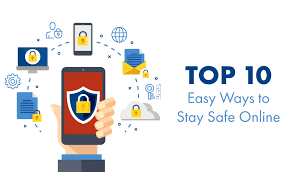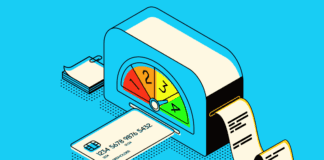In the age of instant onboarding and mobile-first experiences, opening a savings account online or a current account for business is as easy as ordering dinner. With just your Aadhaar, PAN, and a few taps, you’re financially live. But so is the risk.
Cybersecurity threats in India are evolving just as quickly as digital banking adoption. From deepfake customer support calls to hyper-realistic phishing portals, the methods used by fraudsters are no longer amateur-level. And the worst part? Most security breaches happen not because systems are flawed—but because user habits are.
If you’re part of the always-connected, app-switching, cloud-saving generation, then the below read isn’t just a list of safety tips. It can be your new banking safety manual to manage your current account and savings account online.
Entry Points of Risk: Where Most People Slip Up
Most compromises don’t happen through sophisticated hacks—they begin with something small. Here’s where most users unknowingly open the doors:
- Weak Passwords & Lack of 2FA
Still relying on that one memorable password you’ve reused since college? It’s time to level up. Without two-factor authentication (2FA)—like OTPs or biometric login—you’re handing out keys to your bank account.
Ujjivan SFB, for instance, supports biometric login and secure OTP-based approvals across its mobile platform.
- Phishing Is Getting Smarter
Gone are the “Dear customer, your bank account is blocked, click here” days. Today’s phishing emails and fake portals are clean, grammatically accurate, and sometimes ranked high in search ads.
Always inspect:
- Email IDs
- Verify website URLs
- Never click on login links directly from messages
- Public Wi-Fi = Public Risk
Logging into your Online Savings Account over café Wi-Fi is practically an invitation for man-in-the-middle attacks. Hackers can intercept sessions or mirror login pages without you even noticing.
- Mixing Work, Browsing, and Banking
If you’ve got 27 tabs open—including one shady file download—and then you decide to log into your bank account, you’re increasing exposure. Keep financial sessions isolated and minimal.
Building a Digital Safety Net
Being smart with your bank account doesn’t mean paranoia. It means putting guardrails in place so even if something goes wrong, it doesn’t go too far.
- Biometric Login + OTPs
- Use biometric or fingerprint login wherever possible. Combine it with OTP layers for transaction approvals. Avoid passwords alone—especially static ones.
2. Set Transaction Limits
- Don’t need ₹5 lakh IMPS or UPI limits every day? Set your limits down. You can always increase it temporarily when required. The smaller the window, the smaller the risk.
3. Update Devices & Apps
- Cyber attackers often exploit outdated app versions or unpatched devices. Keep auto-updates turned on for your banking app, and regularly update your device’s OS. A few minutes of update time is better than hours fixing a compromise.
4. Always Logout
- It’s surprising how many people leave their sessions open. Whether it’s a browser tab or mobile app, log out every time—especially on shared or office devices.
Run Quarterly Security Audits
Every 3 months, do a quick self-check:
- Change your login password
- Remove banking access from old devices
- Revoke app permissions
- Review your last three months’ transaction logs
Think of this like spring cleaning—but for your bank account.
Watch & Act: Transaction Awareness Is Your Armour
Even with all the layers in place, your best defence is still vigilance. The faster you spot something unusual, the faster you can react.
Enable Real-Time Alerts
Make sure your savings account and current account are linked to:
- SMS notifications
- Email summaries
- Push alerts from your bank app
Banks like Ujjivan SFB send real-time alerts for UPI, ATM, card, and scheduled debit transactions—giving you immediate visibility.
Micro-transaction = Macro Warning
Spot a ₹1 or ₹2 deduction you didn’t initiate? It might be a test charge by someone checking if your account is active. Don’t ignore small anomalies—they’re often the start of bigger frauds.
Handle Statements Like Sensitive Docs
Downloading your e-statement at a coworking space and leaving it in your Downloads folder? Not ideal. Use password-protected files or encrypted folders to store financial documents. And always verify the source of your statement—avoid opening attachments from unknown senders.
Final Thoughts
A modern Online Savings Account offers automation, accessibility, and unmatched convenience. But those features only stay useful when backed by good digital behaviour.
This isn’t about fearing technology—it’s about staying a step ahead of those who misuse it. Cybersecurity is no longer an IT department issue; it’s a life skill. And like every skill, it gets sharper the more you practice.
So, set better boundaries with your bank access and review your settings every few months. And above all, never trade caution for convenience, because your bank account holds your money and your future that is planned with it. Keep it safe.










